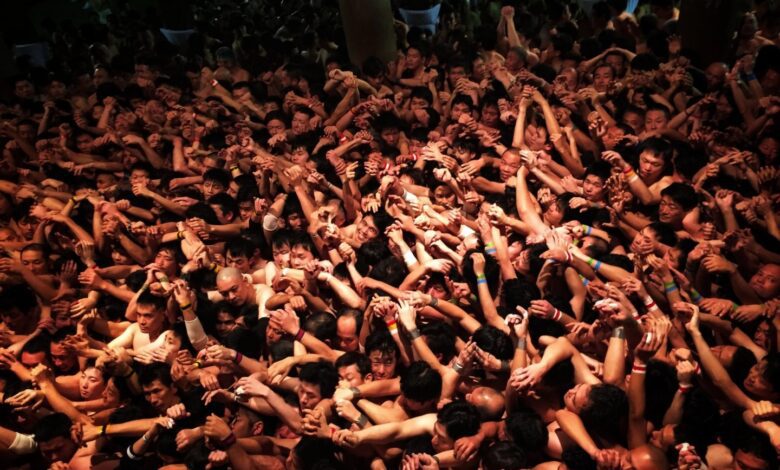Women join Japan’s historic Naked Man Festival, breaking tradition
In a first in Japan, while 40 women join select rituals, the iconic jostling for the 'god man' remains male-exclusive

In a significant departure from its 1650-year history, the Konomiya Shrine in Inazawa town, Japan, has opened its doors to women participating in the renowned ‘naked man’ festival. Scheduled for February 22 this year, the event has traditionally been exclusive to men, drawing around 10,000 participants. However, a shift in tradition now allows women to engage in certain festival rituals, though not the iconic jostling for the ‘shin-otoko’ or “god man.”
Distinct from the musical revelry of ‘The Burning Man,’ the Hadaka Matsuri festival centers around ushering in good luck for the new year. For over a millennium, it has been an all-male affair, culminating in a raucous spectacle where thousands clad only in loincloths vie to touch the revered ‘god man.’ This tactile interaction is believed to absolve participants of sins and bring fortune for the upcoming year. The lively jostling, reminiscent of a frenzied rugby match, has been a hallmark of the festival.
While women have traditionally refrained from the Hadaka Matsuri fest, this year marks a notable shift in dynamics. The decision to include women in certain festival rituals, excluding the jostling for the god man, is seen as a progressive move. The festival faced disruptions over the past three years due to the pandemic, prompting increased requests from women in the town to participate, according to Mitsugu Katyama, an official of the organizing committee.
Katyama clarified that there was no explicit or active ban on women in the past, but they tended to stay away from the festival voluntarily. In response to the growing interest, a group of 40 women expressed their intention to take part in the festival, challenging long-standing norms.
Ayaka Suzuki, a local woman and vice chairman of the group advocating female participation, shared her desire to be part of the festivities since her youth. She conveyed her regret, saying, “I could have participated if I were a boy.” The decision to include women in select rituals reflects a changing cultural landscape, as women seek to break free from historical constraints and actively engage in traditions previously reserved for men.
The festival’s unique blend of tradition, spirituality, and boisterous celebration has captured local and international attention. The inclusion of women in this age-old event not only signifies a cultural evolution but also prompts reflection on the evolving role of gender in traditional ceremonies.
Despite the shift, the essence of the festival remains intact, with the ‘naked man’ event retaining its symbolic significance for participants. The Hadaka Matsuri festival stands at the intersection of history and modernity, offering a glimpse into a Japan where tradition and progress coexist.
As the festival date approaches, the eyes of the community and beyond will be on Inazawa town, where this symbolic departure from tradition unfolds, marking a new chapter in the rich tapestry of Japanese cultural heritage.
You might also be interested in-World’s biggest experimental nuclear fusion reactor inaugurated in Japan



